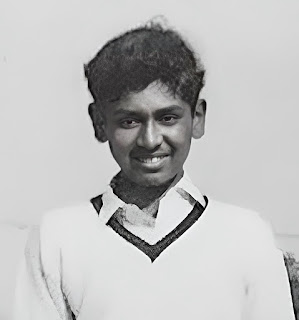CHARNEY HALL WW1 Memorial
Louis’s original article in Cumbrian War Memorials provoked much discussion about Charney’s Memorial Hall and the possible whereabouts of the mythical WW1 memorial plaque.
Empathy is the last emotion that is bestowed upon the boys in a preparatory school who are miles away from family and home. We were all too much occupied with the struggle for our own survival! They say that competition is healthy - well we had plenty of that - in the classroom, on the playing fields, in the rifle range and in the school sports at the end of the Summer Term. Our parents saw a summary of the fruits of our labours neatly and concisely set out in our school reports - ‘could do much better’- can’t hit the ball to leg’- ‘doesn’t try hard enough’- ‘appears to be in a dream’- ‘is progressing well’……what!!
I suspect that empathy comes with love, with the responsibility of caring for a pet, with seeing others suffer, with having to deal with life’s experiences including death. Empathy is linked to the complexity of emotion and that is something that could not be laid bare at boarding school.
We were not exposed to the horrors of war except by courtesy of Pinewood Studios and the Sunday film. That was romanticised, sanitised even glorified and despite the possibility of death being around every corner we knew that it couldn’t possibly be us who would have to pay the ultimate price.
So the lists of names on a sheet of cast metal meant nothing to us unless there was a familial connection. Even then we would have been too young to remember - there would have been no direct emotional connection.
No wonder we cannot agree about the whereabouts of the WW1 Memorial plaque!
I think that we may now have at last solved at least part of the mystery. The CH Notes of 1924 reported that there was a consensus of opinion to erect a ‘small Hall’ in memory of the fallen instead of the customary Church memorial. Upon completion of the new building by November 1923 a temporary ‘panel’ was placed on the south wall*(presumably the gable end). The plaque lists the 26 old boys who gave their lives for King and country in the Great War. The design was illustrated in the Notes (see above).
However it is possible that a permanent memorial in the form of a bronze plaque was never commissioned as there appears to be no reference to it in future editions of the Notes.
Alumni will recall that a carved keystone, which can be clearly seen in the photograph above, was built into the porch over the arched entrance.
The Hall was opened on Sunday 4 November 1923 by the Bishop of Barrow, The Right Reverend Campbell West-Watson (1909-1926).
A different question now arises - What happened to the ‘temporary panel’ which it is highly likely was hung on picture cord, was sign-painted and made of redwood or pitch pine?
* infuriatingly there does not appear to be a photograph of the interior of the south wall in existence.







Comments